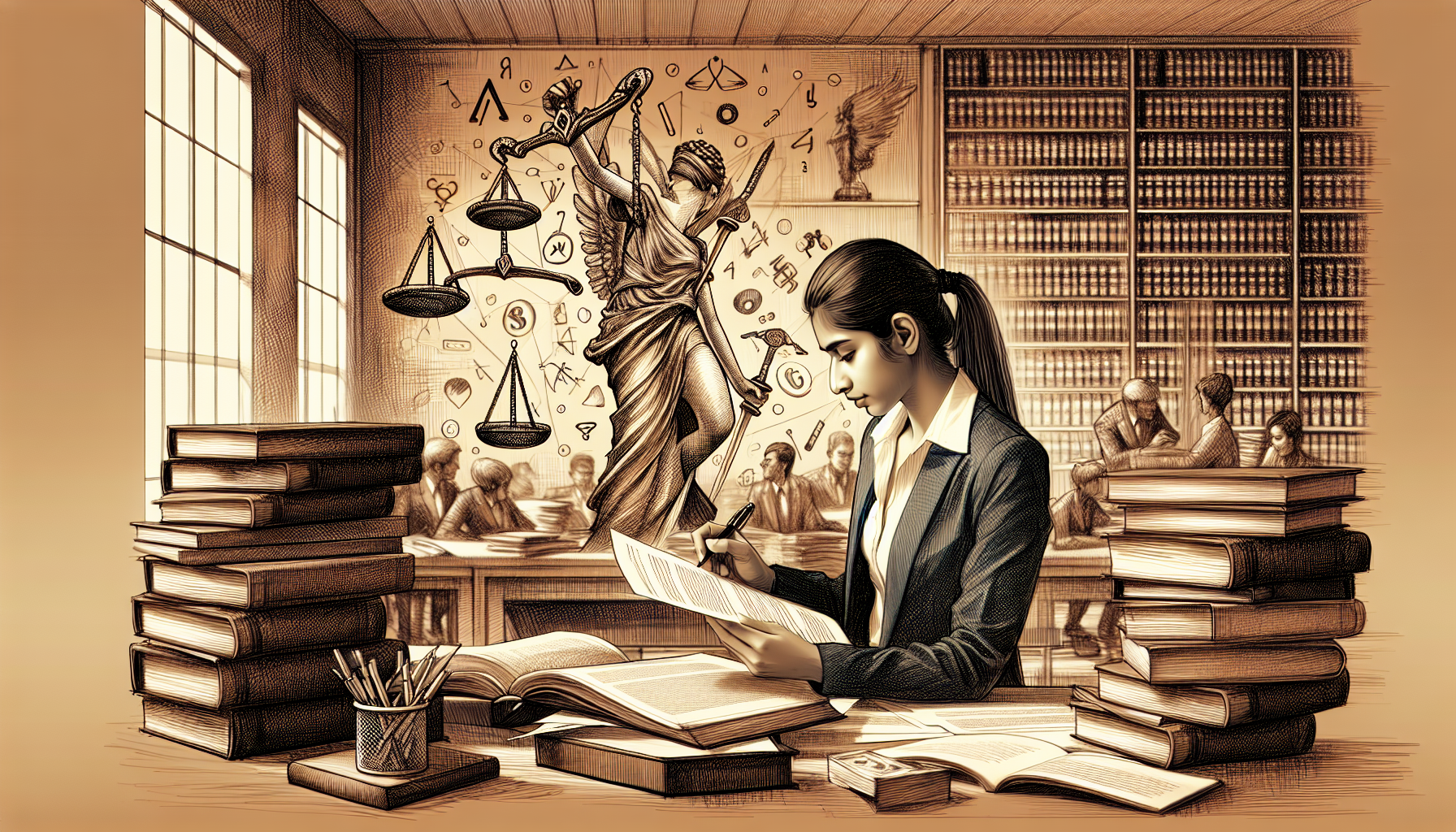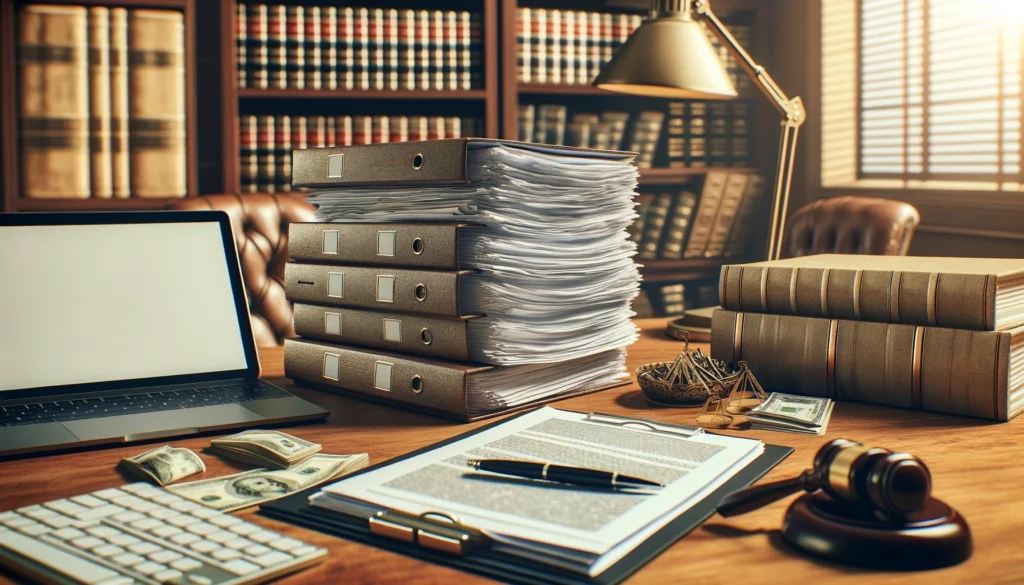
Harnessing Technology for Legal Precision: An Overview
The integration of technology within legal practices has become essential, driving precision and efficiency. Legal professionals are increasingly leveraging advanced tools to enhance their workflows, ensuring better outcomes for their clients. One such revolutionary tool is ChatGPT, an AI language model by OpenAI, which offers potent capabilities for drafting legal documents. ChatGPT’s nuanced understanding and the ability to generate contextually accurate text can significantly streamline the creation of precise legal notices, particularly in complex areas such as personal injury cases.
However, employing ChatGPT effectively necessitates a structured approach. This ensures the generated content is not only accurate but also adheres to legal standards.
Laying the Groundwork: Data Preparation and Input
Before leveraging ChatGPT for drafting legal notices, it’s critical to meticulously prepare and input the necessary data.
- Understanding the specifics of personal injury cases: Familiarize yourself with the nuances of personal injury law, including statutory requirements, precedent cases, and typical compensation parameters. This will provide a solid foundation for formulating relevant queries.
- Gathering comprehensive case details: Collate all relevant information pertaining to the case. This includes medical reports, eyewitness accounts, police reports, and any other documentation that supports the claim.
- Data security and confidentiality: Ensure that any data input into ChatGPT is handled with the utmost confidentiality. Use encryption tools and anonymize sensitive information to safeguard client privacy and comply with legal protocols.
Once the data is prepared, the next step involves crafting effective prompts to guide ChatGPT in generating precise legal content.
Also read:
Mastering Prompts: Asking the Right Questions
The efficacy of ChatGPT largely depends on the quality of the prompts provided. Crafting well-articulated prompts can ensure the AI generates detailed and accurate content fit for legal purposes.
- Crafting effective prompts: Start with clear, concise prompts that encapsulate the essential elements of your legal notice. For instance, a prompt might be, “Draft a personal injury notice for a client who suffered a fractured arm due to a slip and fall at a supermarket. Include details such as date, location, injuries, and damages incurred.”
- Using context-rich questions: Contextualize your prompts to elicit comprehensive responses. For example, “Given the client’s medical records indicating a severe fracture and the eyewitness reports, outline the potential claims for pain, suffering, and lost wages.”
- Nuanced prompt examples:
- “Analyze the legal implications of a car accident where the at-fault driver was under the influence, and the victim sustained multiple injuries, including long-term disability.”
- “Generate a detailed demand letter outlining the compensation sought for medical expenses, rehabilitation costs, and emotional distress due to a workplace injury.”
By focusing on these strategies, legal professionals can harness ChatGPT effectively, ensuring that the generated content is thorough and relevant. The next crucial step is refining the output to meet legal standards.
Also read:
Refining the Output: Quality Control Techniques
Once ChatGPT has generated the preliminary drafts, it’s vital to verify and refine the output to ensure it meets legal requirements. This step includes several quality control techniques.
- Verification and validation of content: Cross-check the generated text against factual data and legal standards. This includes fact-checking dates, names, and circumstances to avoid any discrepancies.
- Ensuring legal accuracy and compliance: Make sure the generated notices adhere to applicable laws and jurisdictional requirements. This might involve consulting legal manuals or precedents to confirm compliance.
- Fine-tuning for clarity and precision: Revise the text to enhance clarity, precision, and readability. Legal notices should be clear and unambiguous, with a formal tone that is free of errors.
After ensuring the content is accurate and compliant, the next step is to streamline these processes through integration and automation.
Also read:
Automation and Workflow Integration: Streamlining Operations
Integrating ChatGPT into daily paralegal tasks can significantly enhance operational efficiency. Automation tools and software can further streamline these processes.
- Workflow integration: Incorporate ChatGPT into existing legal workflows using integration tools such as API connectors. This enables smooth interaction between different software systems.
- Automation tools: Utilize software tools that automate repetitive tasks, such as document generation, data entry, and scheduling. These tools can be configured to work seamlessly with ChatGPT, further boosting efficiency.
- Enhancing team collaboration: Effective use of collaborative tools like shared digital workspaces and project management software can foster better teamwork and productivity among legal staff.
By optimizing workflow integration, legal teams can focus more on strategic tasks, allowing for greater innovation in addressing complex legal scenarios.
Also read:
Advanced Techniques: Leveraging Nuanced Prompts for Complex Scenarios
Addressing intricate legal issues often requires specialized prompt strategies. Advanced techniques can help extract detailed responses for complex scenarios.
- Complex scenario prompts: Create detailed prompts that capture the multifaceted nature of complex cases. For example, “Draft a litigation strategy for a personal injury case involving multiple defendants, where conflicting eyewitness reports need to be reconciled.”
- Adjustments and iterations: Refine prompts iteratively based on the responses received. If the initial output lacks necessary details, redefine the prompt to focus on specific aspects such as liability, damages, or legal precedents.
By leveraging these advanced techniques, legal professionals can address even the most complicated legal scenarios with precision and confidence.
Also read:
Ethical Considerations and Best Practices
While AI provides significant advantages, it’s crucial to maintain ethical standards in its utilization. Balancing AI assistance with human oversight is essential.
- Understanding ethical boundaries: Ensure that the use of AI respects client confidentiality, data protection laws, and ethical guidelines set by legal bodies.
- Human oversight: Always have a qualified legal professional review AI-generated content to avoid inaccuracies and ensure adherence to professional standards.
- Adhering to standards: Follow legal and organizational norms to maintain the integrity and reliability of AI-assisted legal processes.
Adhering to these ethical considerations ensures the responsible and effective use of AI in legal practices.
Future Trends: The Evolving Role of AI in Legal Work
The future holds exciting prospects for AI in the legal domain. Emerging trends indicate a growing reliance on AI for complex legal tasks, enhanced by continuous advancements in natural language processing.
- Better accuracy and efficiency in legal research and drafting
- More sophisticated AI tools integrated into legal practices
By staying abreast of these developments, legal professionals can prepare for a future where AI significantly augments legal work.
Also read:
Conclusion: Embracing the Future of Legal Noticing
Incorporating ChatGPT into personal injury cases can revolutionize legal practices, offering enhanced precision and efficiency. By continually learning and adapting to new technologies, legal professionals can stay ahead in the ever-evolving landscape of legal work.


